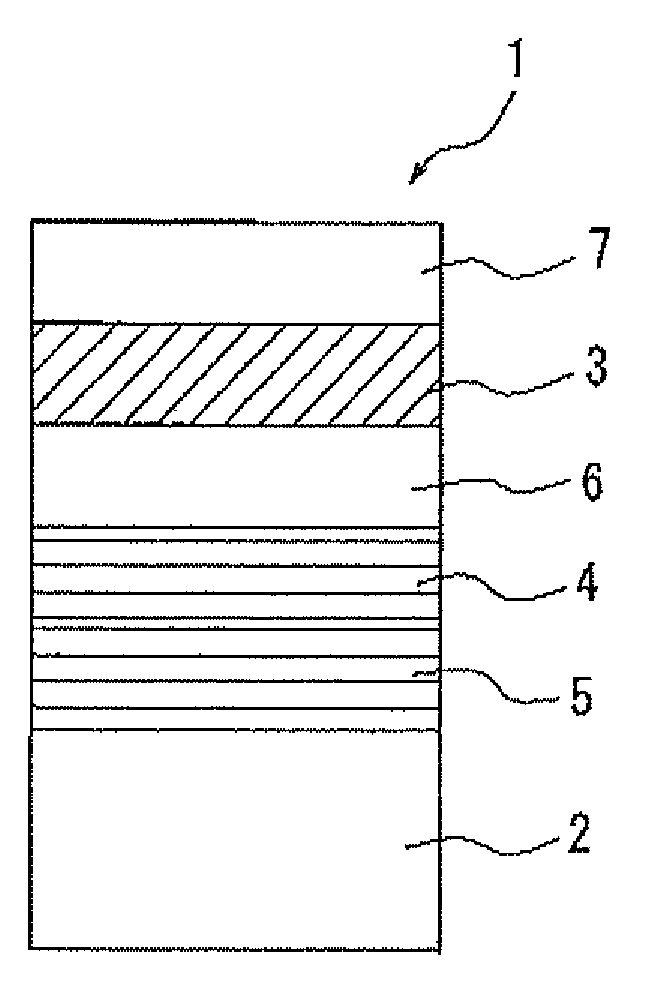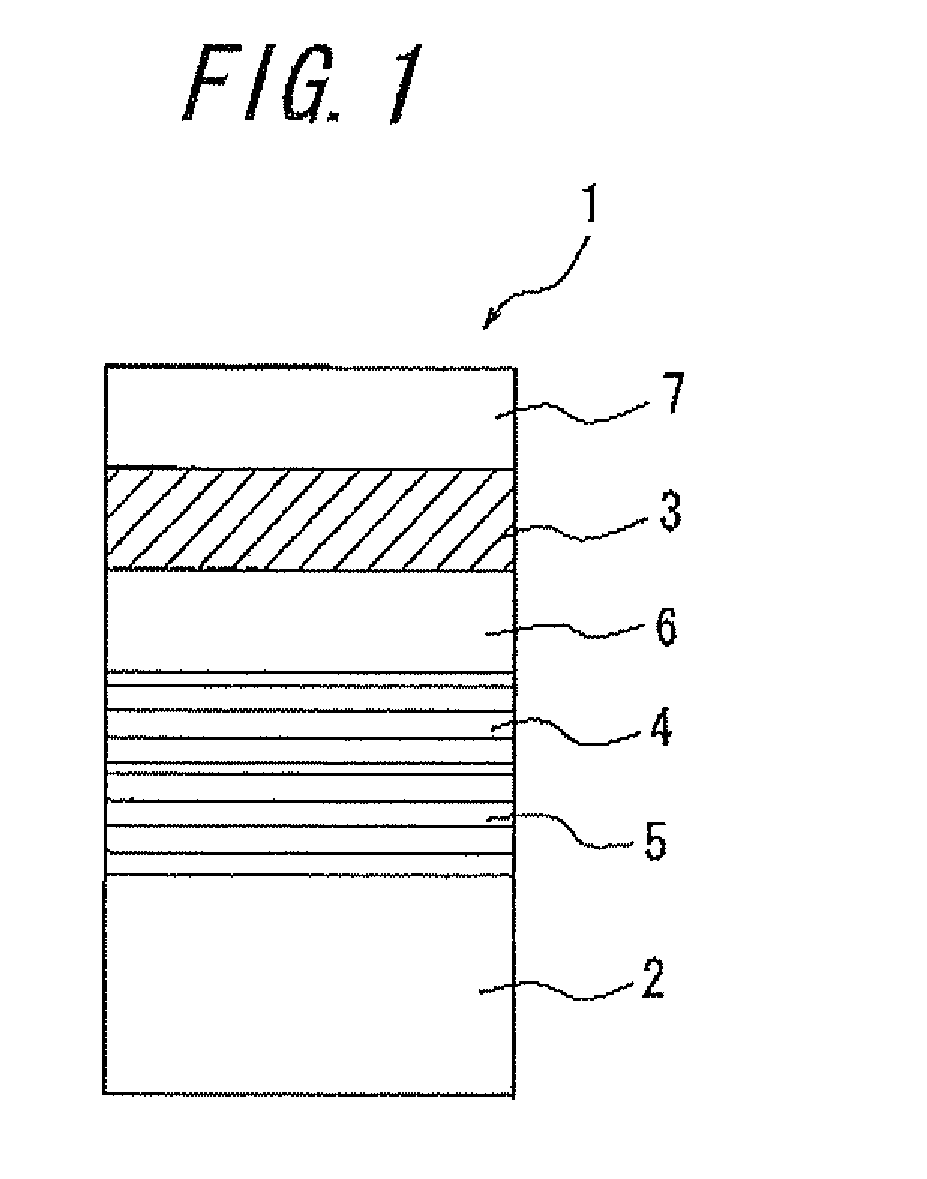Light-emitting element
a technology of light-emitting elements and substrates, which is applied in the direction of discharge tubes/lamp details, discharge tubes/lamp details, incadescent envelopes/vessels, etc., can solve the problems of reducing the light-emitting efficiency, affecting the reliability of the sensor, and difficult to completely reflect primary light, so as to reduce the peak intensity of light, suppress the excitation of the substrate, and reduce the light energy arriving at the substrate
- Summary
- Abstract
- Description
- Claims
- Application Information
AI Technical Summary
Benefits of technology
Problems solved by technology
Method used
Image
Examples
example 1
[0041]By using the MOCVD method, a light-emitting element (total thickness (excluding a substrate): 3.9 μm) according to the present invention was formed by sequentially growing: a light dispersing multilayered film (831.5 nm, dopant Se); an n-reflective film (thickness: 1.8 μm, layer formed by repeating Al0.45Ga0.55As (42.3 nm) / AlAs (47.3 nm) 20 times, dopant Se); an n-clad layer (thickness: 90 nm, Al0.5In0.5P, dopant Se); a light-emitting layer (thickness: 84 nm, InyGa(1-y)P (y=0.53), undoped); a p-clad layer (thickness: 180 nm, Al0.5In0.5P, dopant Mg); and, a p-reflective layer (thickness: 0.9 μm, layer formed by repeating Al0.45Ga0.55As (42.3 nm) / AlAs (47.3 nm) 10 times, dopant C) on the GaAs substrate (Si doped, plane direction: (100) 15° off, thickness: 350 μm). The p-reflective layer functioned as a vertical resonator with an n-reflective layer, and was inserted to narrow the emission spectrum and make the light-emitting element further suitable for use in sensors.
[0042]The l...
example 2
[0045]A light-emitting element similar to that in Example 1 was prepared, except that the light dispersing multilayered film in Example 2 was made of a AlxGa(1-x)As material (0≦x≦1), and, as illustrated in FIG. 4, the Al composition in the AlxGa(1-x)As material was designed such that the lower Al composition was formed by 0%×2, 10%×, 15%×2, 20%×2, 25%×3, 30%×4, and 35%×5 cycles, and the thicknesses of the respective sets of cycles were set at 65.9 nm, 67.8 nm, 68.8 nm, 69.8 nm, 70.7 nm, 71.7 nm, and 72.7 nm so as to reflect the wavelength of 870 nm of the substrate excited light. Note that, since the cycle of the lower Al composition 0% to the higher Al composition 100% (32.9 nm) on the left end and the cycle of the higher Al composition 100% to the lower Al composition 35% (36.4 nm) on the right end do not have the confining effect, these cycles are not included in the number of pairs.
[0046]In addition, a PL measurement was made on a sample having only the light dispersing multilay...
PUM
 Login to View More
Login to View More Abstract
Description
Claims
Application Information
 Login to View More
Login to View More - R&D
- Intellectual Property
- Life Sciences
- Materials
- Tech Scout
- Unparalleled Data Quality
- Higher Quality Content
- 60% Fewer Hallucinations
Browse by: Latest US Patents, China's latest patents, Technical Efficacy Thesaurus, Application Domain, Technology Topic, Popular Technical Reports.
© 2025 PatSnap. All rights reserved.Legal|Privacy policy|Modern Slavery Act Transparency Statement|Sitemap|About US| Contact US: help@patsnap.com



